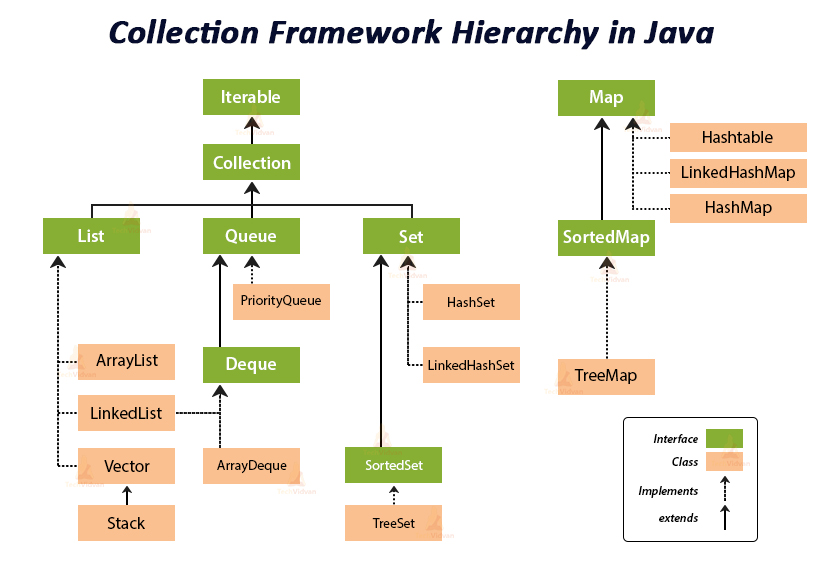Welcome to the Collection Framework repository! 🎉 This repository is designed to provide an easy-to-understand and comprehensive exploration of the Collection Framework in Java.
Java collections refer to a collection of individual objects that are represented as a single unit. You can perform all operations such as searching, sorting, insertion, manipulation, deletion, etc., on Java collections just like you do it on data.
A Java collection framework provides an architecture to store and manipulate a group of objects. A Java collection framework includes the following:
Interfaces
Classes
Algorithm
Interfaces: Interface in Java refers to the abstract data types. They allow Java collections to be manipulated independently from the details of their representation. Also, they form a hierarchy in object-oriented programming languages.
Classes: Classes in Java are the implementation of the collection interface. It basically refers to the data structures that are used again and again.
Algorithm: Algorithm refers to the methods which are used to perform operations such as searching and sorting, on objects that implement collection interfaces. Algorithms are polymorphic in nature as the same method can be used to take many forms or you can say perform different implementations of the Java collection interface.
The Java collection framework provides the developers to access prepackaged data structures as well as algorithms to manipulate data. Next, let us move to the Java collections framework hierarchy and see where these interfaces and classes resides.
The Practical (IMPLEMENTATION) project offers a practical approach to understanding the Collection Framework. It includes numerous examples and implementations of different data structures and algorithms provided by the framework. These implementations showcase how to use various collection classes, such as lists, sets, queues, and maps, in real-world scenarios. Each implementation is accompanied by clear explanations and code snippets, making it easier for you to grasp the concepts and apply them in your own projects. 💡📚
The Theory project serves as a complete theoretical guide to the Collection Framework. It covers all the important concepts, principles, and design patterns behind the framework. From understanding the fundamentals of collections and iterators to exploring advanced topics like comparators and hash codes, this section provides comprehensive explanations and insights. It also dives into the complexities of data structures, algorithms, and their best use cases. 🧠🔬
Contributing to this repository is highly encouraged! By adding your own implementations, improving existing code, or suggesting enhancements, you can actively participate in the learning process and help make this resource even more valuable. Whether you're a beginner learning the basics or an experienced developer looking to deepen your understanding, this repository aims to cover all the essential aspects of the Collection Framework. 💪🌟
So, let's collaborate and leverage the full potential of the Collection Framework! You can access the repository and start your journey by clicking here. ✨🚀💻
If you want to contact me, you can reach me through below handles.

